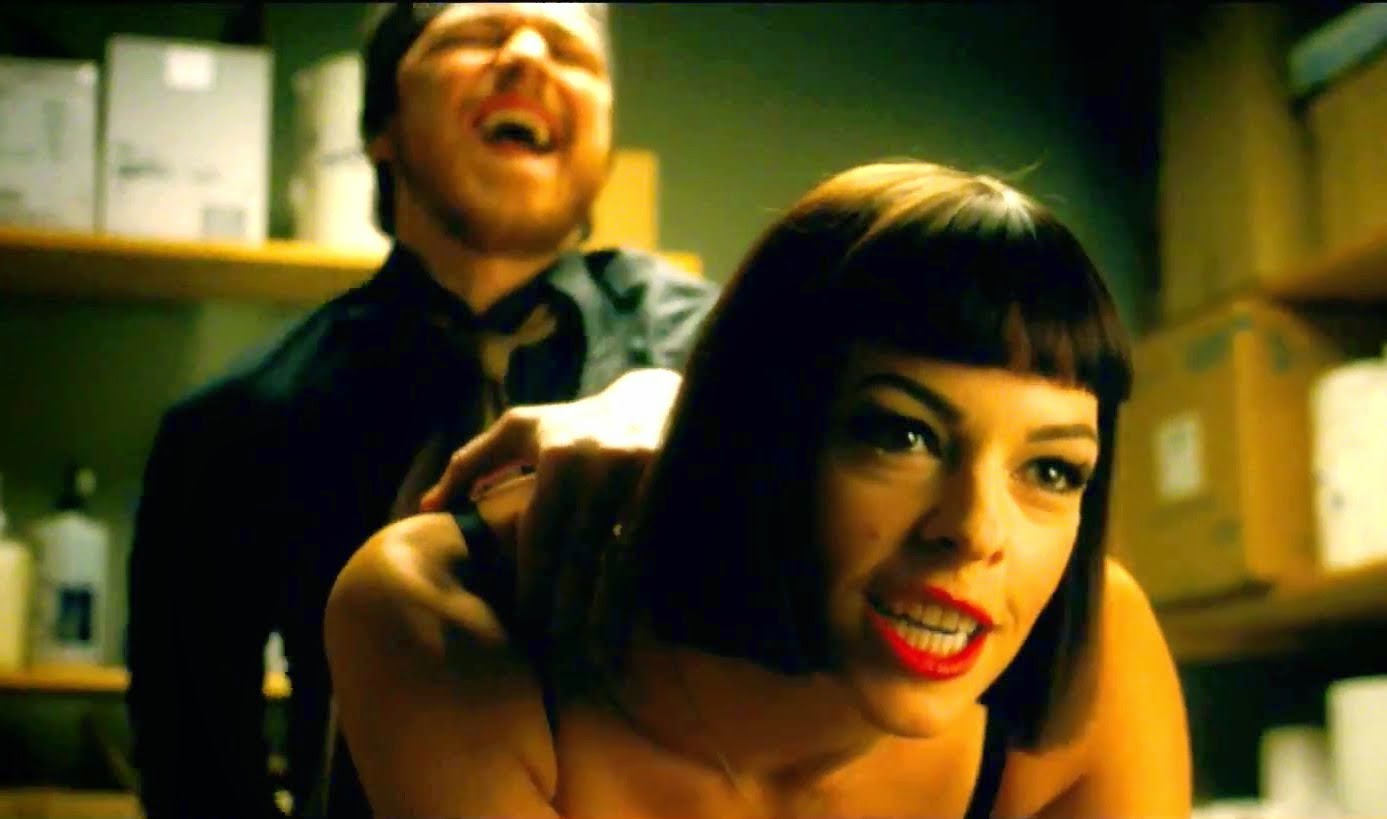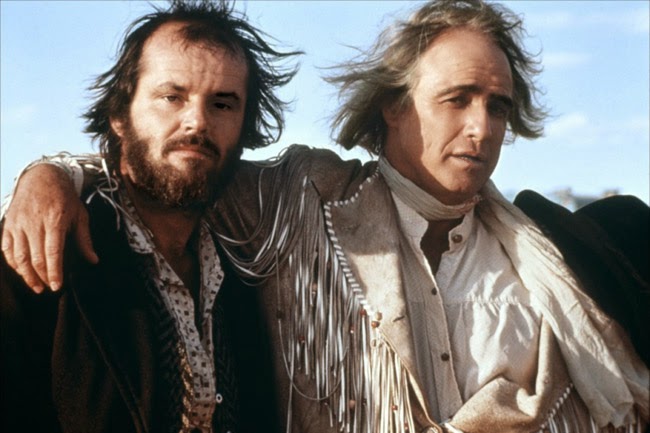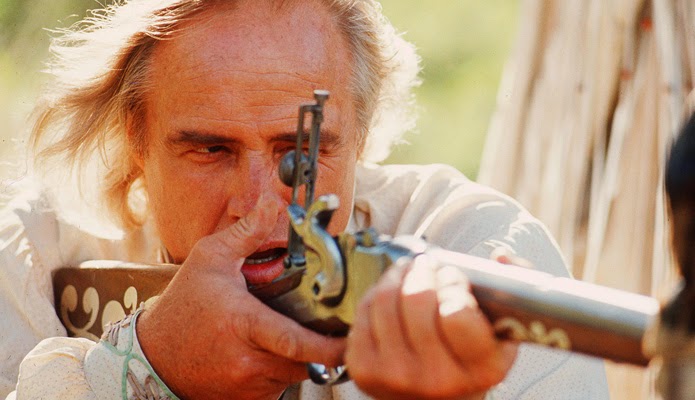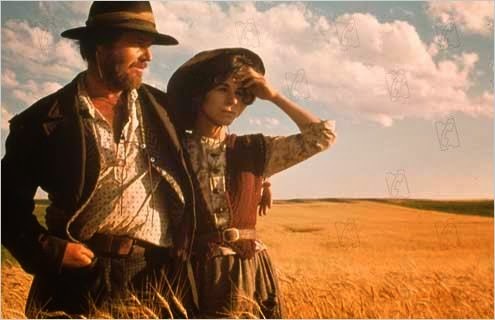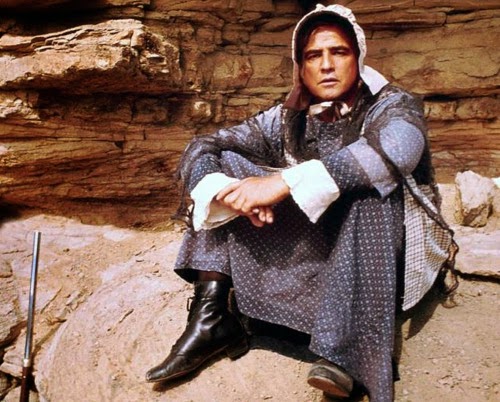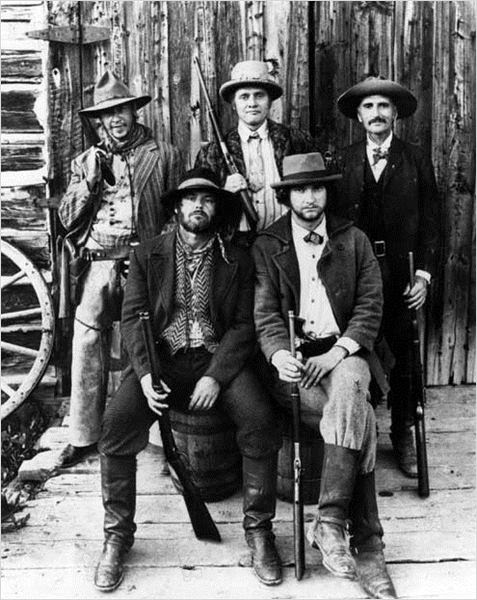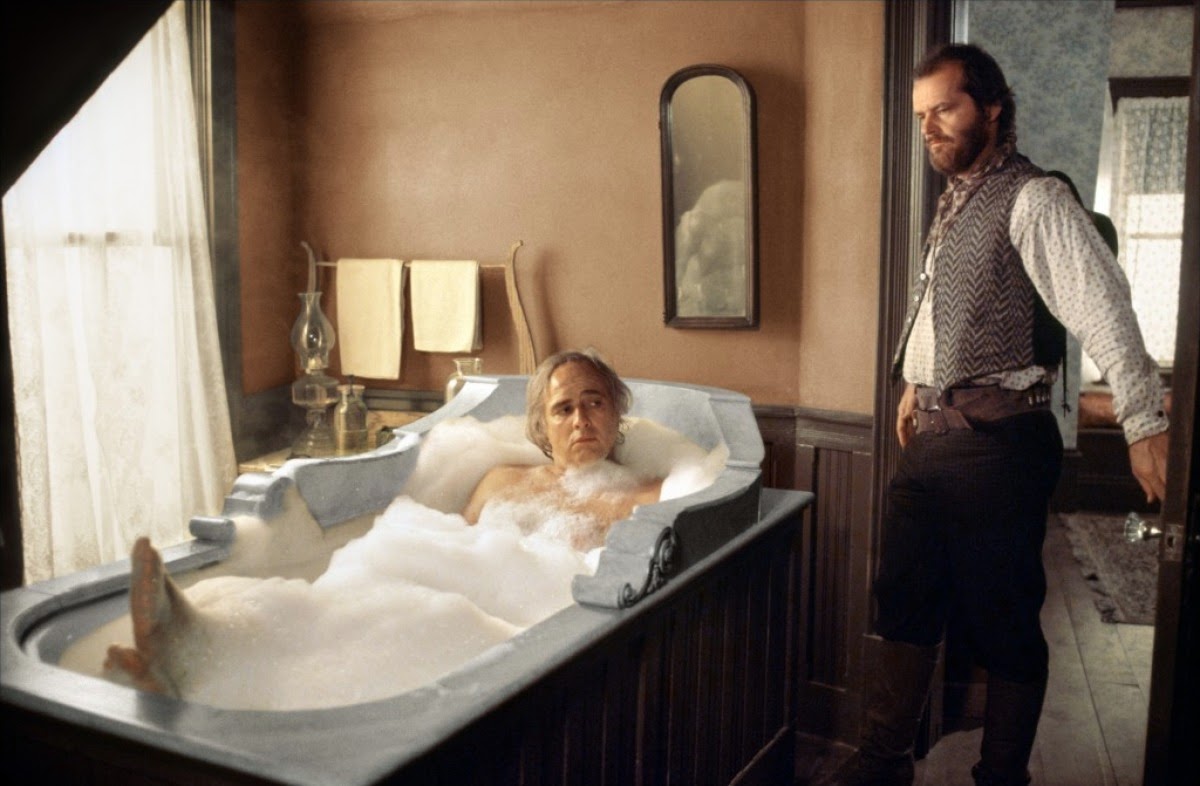THE SQUEEZE
aka THE RIP-OFF
(Italy/West Germany - 1978; US release 1981)
Directed by Anthony M. Dawson (Antonio Margheriti). Written by Simon O'Neill (Giovanni Simonelli), Marc Princi, and Paul Costello. Cast: Lee Van Cleef, Karen Black, Edward Albert, Lionel Stander, Robert Alda, Angelo Infanti, Peter Carsten, Antonella Murgia, Dan Van Husen, Roy Brocksmith, Ron Van Clief, Steve Burche. (R, 99 mins)
Italian cult director Antonio Margheriti (1930-2002) was the consummate journeyman over the course of his career, dabbling in everything from muscleman epics, gothic horror, and 007 ripoffs in the '60s, spaghetti westerns and gialli in the '70s, and Namsploitation, commando, and INDIANA JONES-derived action films in the '80s. He's perhaps best known today for his "Gamma 1" quadrilogy of goofy and practically interchangeable far-out space operas THE WILD, WILD PLANET (1965), WAR OF THE PLANETS (1966), WAR BETWEEN THE PLANETS (1966) and SNOW DEVILS (1967) as well as the immortal YOR: THE HUNTER FROM THE FUTURE (1983) and his many actioners of the '80s, like THE LAST HUNTER (1980), HUNTERS OF THE GOLDEN COBRA (1982), CODENAME: WILDGEESE (1984), and INDIO (1989). Margheriti, aka "Anthony M. Dawson," dabbled in a little bit of everything and could stage an explosion with the panache of any Hollywood blockbuster.
With his 1975 spaghetti western/kung-fu hybrid THE STRANGER AND THE GUNFIGHTER, Margheriti worked with legendary badass Lee Van Cleef for the first time and the pair became good friends who would team up for five more projects before Van Cleef's death in 1989. After STRANGER, Margheriti cast Van Cleef as the bad guy squaring off against Jim Brown in the 20th Century Fox blaxploitation western TAKE A HARD RIDE, which would be Margheriti's only Hollywood studio gig. Van Cleef also turned up in Margheriti's RAIDERS OF THE LOST ARK knockoff JUNGLE RAIDERS (1985) and two of his WILD GEESE ripoffs with CODENAME: WILDGEESE (released in the US by New World in 1986), and the unreleased-in-the-US THE COMMANDER (1988). But the pinnacle of the Margheriti/Van Cleef alliance is 1978's THE SQUEEZE, a wonderfully grungy little heist flick that began production in December 1977, with extensive location work in the NYC metropolitan area in January and February 1978. According to Edoardo Margheriti, the director's son and regular production assistant, some of THE SQUEEZE's NYC shoot coincided with a major late January snowstorm that, given the time frame, would've been the tapered-off remnants of the Blizzard of '78 that hit Ohio during the last week of January. By the time it hit the east coast, it wasn't quite the monster that incapacitated Ohio, but it managed to dump heavily on the city, which also got hit with its own separate blizzard during the first week of February and you can see some of both storms in THE SQUEEZE. The brutal cold, the unplowed streets, the wet slush, the visible breath on the actors, and cars getting stuck in the snow all add to the harshly gritty ambience that makes it an essential NYC movie of the era, playing more like a street-tough American crime thriller rather than the generously budgeted, Carlo Ponti-backed Italian/German co-production that it was. Margheriti made a lot of films over his long career, but none boasted the bitterly cold and uniquely scuzzy verite atmosphere that he and cinematographer Sergio D'Offizi captured with THE SQUEEZE. They secured an American production office and permits to shoot in certain areas, but there's an unmistakable handheld immediacy to scenes set in fleabag hotels, bars, tenements, a police precinct, filthy cabs, and a ride on the Roosevelt Island tram, and enough gawking onlookers throughout to suggest that Margheriti caught a lot of footage on the fly in the guerrilla-style of many Italian filmmakers shooting in the city without permits in the 1970s and 1980s. The only mistake Margheriti makes in his depiction of the city's sublime grime of the time is not finding a reason to send any of the characters to Times Square.
THE SQUEEZE was written by veteran Italian screenwriter and frequent Margheriti collaborator Giovanni Simonelli (SEVEN DEATHS IN THE CAT'S EYE), Marc Princi (GREAT WHITE), and voice/dubbing actor Paul Costello, who was probably in charge of the English translation. The script is essentially another in the One Last Job heist subgenre, with legendary safecracker Chris Gretchko (Van Cleef) in self-imposed exile on a Mexican ranch under the name "Ray Sloan." He's tracked down by Jeff Olafson (Edward Albert), the son of an old criminal associate who told his son to find Chris if he ever got into a jam. Jeff is involved with some German mobsters led by Van Stratten (Peter Carsten), and he needs Chris to open a safe filled with diamonds or Van Stratten's goons will whack him. Chris is reluctant ("The last door I opened cost me eight years!"), but out of loyalty to Jeff's late father, agrees to help the kid out and heads back to NYC and secures the assistance of his old fence, grumpy pawn shop owner Sam (Lionel Stander). When Van Stratten tries to cut Jeff out of the deal, Jeff tells Chris that Van Stratten's going to kill him as soon as he opens the safe, prompting Chris to hatch a scheme to keep the diamonds for themselves and split the take. To do so requires Jeff being out of the picture so nobody knows about his involvement, so he gets himself arrested on a minor charge so he can spend a month in jail while Chris plans to wait it out at a safe house rented by Jeff. Chris gets the stones, but takes a bullet in the leg in the process, and is tended to at the safe house by ditzy, new age neighbor Clarisse (Karen Black), while Van Stratten's guys and the muscle for the safe owner (Roy Brocksmith) try to track down Jeff, figuring there's some kind of con game going on. All the while, irate police captain Donati (Robert Alda) is perpetually one step behind but closing in.
As the double and triple crosses ensue, Chris takes too long to realize that he's being played, and the script could do a better job of exploring that storyline. Once he knows Chris has the diamonds, Jeff is already figuring out a way to get rid of him. Chris is a smart enough guy that he should see this, but time and again, he lets his loyalty to Jeff's father blind him to what should be right in front of his face. These are interesting ideas that are never fully fleshed out, as Margheriti gets sidetracked with an extended action sequence and a series of explosions that were impressive enough for Ponti to have him recycle the footage for his 1979 PIRANHA ripoff KILLER FISH. THE SQUEEZE is one of the rare Margheriti films where dialogue scenes really come alive, and it's likely due in part to the abundance of American actors working together instead of European actors being post-synched later on. For instance, here's a very loose and improvisational feel to some of Van Cleef's and Stander's scenes together, with Stander even making fun of Van Cleef's earring at one point.
There's that same familiar feel in the conversations between Chris and Jeff. Albert was a promising actor in the early '70s, winning a Golden Globe for his breakout performance as a young blind man who falls in love with Goldie Hawn in BUTTERFLIES ARE FREE (1972), but while he remained busy until his death in 2006 at just 55, stardom eluded the son of GREEN ACRES star Eddie Albert. He turns in one of his best performances in THE SQUEEZE, but not long after, he was mainly doing TV guest spots and B-movies like GALAXY OF TERROR (1981) and THE HOUSE WHERE EVIL DWELLS (1982). His most high-profile gig after that was a recurring role as Linda Hamilton's love interest on the CBS series BEAUTY AND THE BEAST. But Albert was still getting major Hollywood work when he made THE SQUEEZE, which features an unusually strong cast for a Margheriti film--probably because Ponti could afford them--the most notable being the participation of Black. Black was nominated for an Oscar for 1970's FIVE EASY PIECES and was only a couple of years removed from films like THE GREAT GATSBY (1974), NASHVILLE, THE DAY OF THE LOCUST, the legendary TV-movie TRILOGY OF TERROR (all 1975), BURNT OFFERINGS, and Alfred Hitchcock's swan song FAMILY PLOT (both 1976). Black's fall from the A-list was alarmingly rapid--she worked for Margheriti again on KILLER FISH--though she remained a beloved B-movie figure until her death in 2013, her late-career cult status due in large part to shock rockers The Voluptuous Horror of Karen Black, and for her role as Mother Firefly in Rob Zombie's HOUSE OF 1000 CORPSES (2003), which she apparently disliked so much that she refused to do the 2005 sequel THE DEVIL'S REJECTS and was replaced by Leslie Easterbrook.
Many American actors did these sort of Eurotrash movies for quick paychecks and free vacations, but the ensemble of THE SQUEEZE brings their A-game. At the heart is a top-notch Van Cleef, who does everything he can to add deeper dimensions to the character. Chris is a guy who made his money and enjoyed the life, but he knew when to get out, especially now that the game is run by greedy bastards like Van Stratten and amoral shitbags like Jeff. It's only through his loyalty to Jeff's father that he inadvertantly allows himself to be manipulated by the young man. It almost takes too long for Chris to realize that Jeff isn't like his father (or Chris or Sam, for that matter), and Van Cleef's weary yet stone-cold Angel Eyes demeanor in the climax is some terrific acting. When he's forced to shoot Jeff and tells Sam with a resigned sadness "I had to kill the kid," both old men lament not just the loss of someone they trusted and that Chris came to regard like his own son, but the loss of another era when a man's word and his honor meant something. Chris doesn't even care about the diamonds at that point. He's already lost too much for the stones to even matter. As Sam's car drives down the unplowed, snowy, slushy streets with the NYC skyline in the background, there's an overwhelming sense of melancholy artistry that Margheriti rarely attempted. Throughout its duration, THE SQUEEZE, while containing some weak writing, some typically dubious Margheriti miniatures in the explosion sequence and boasting a cheesy yet oddly effective and infectiously catchy score by Paolo Vasile (Italian pop group I Nuovi Angeli performs the opening credits tune "Now"), comes dangerously close to being a genuine auteur statement by the guy who would go on to make YOR: THE HUNTER FROM THE FUTURE. It's almost a legitimately great movie.
 |
| On-set wardrobe malfunction or Lee Van Cleef making unreasonable demands of Antonio Margheriti? (photo from antoniomargheriti.com) |































